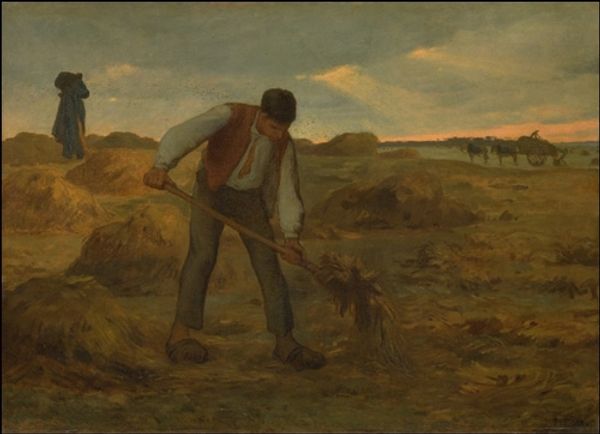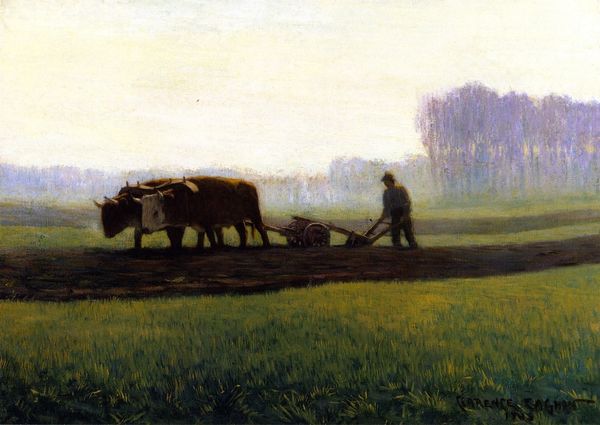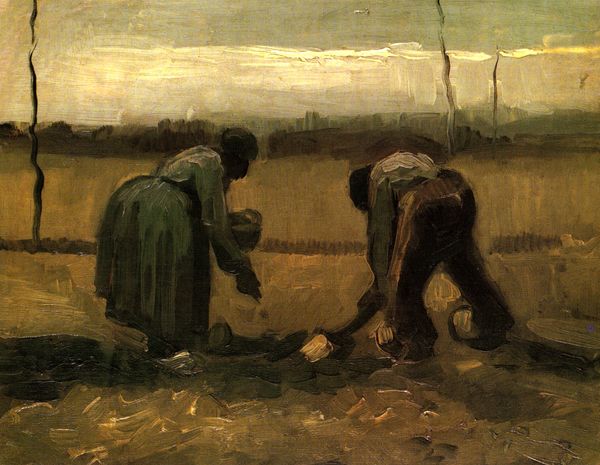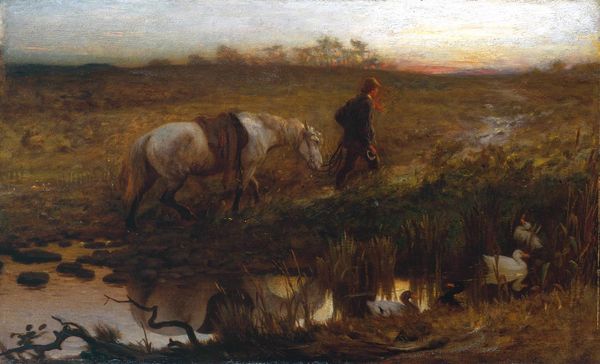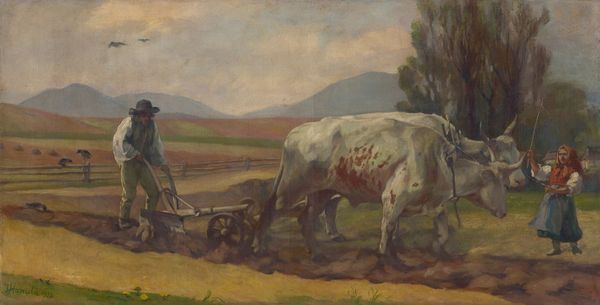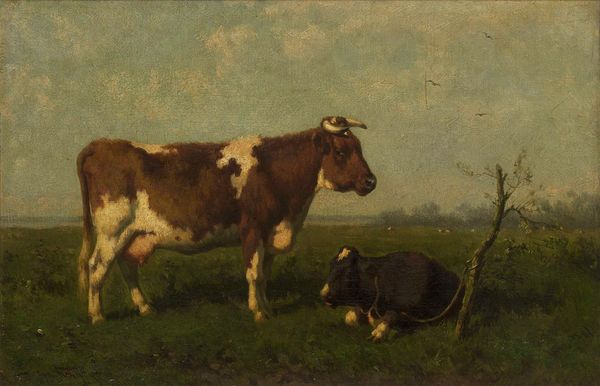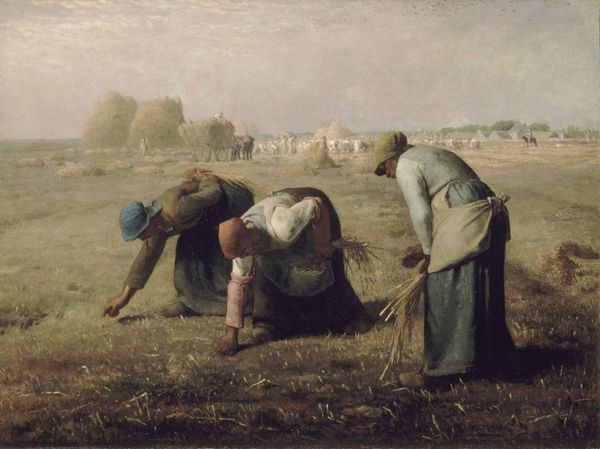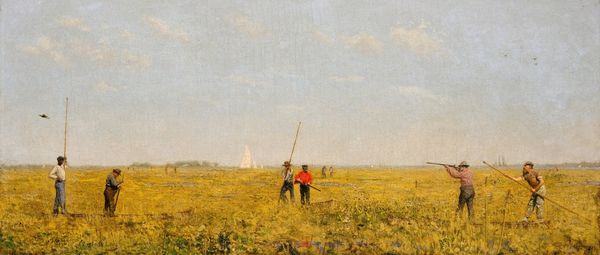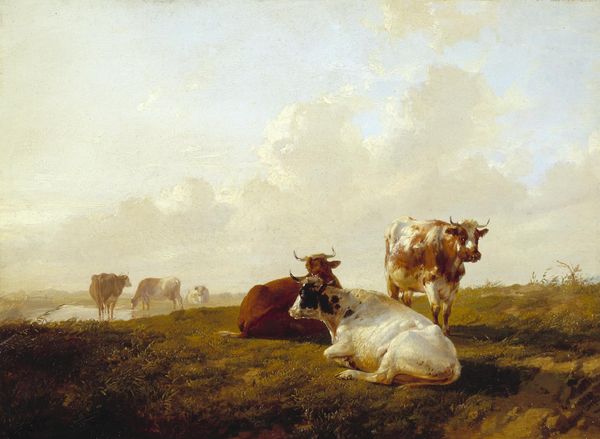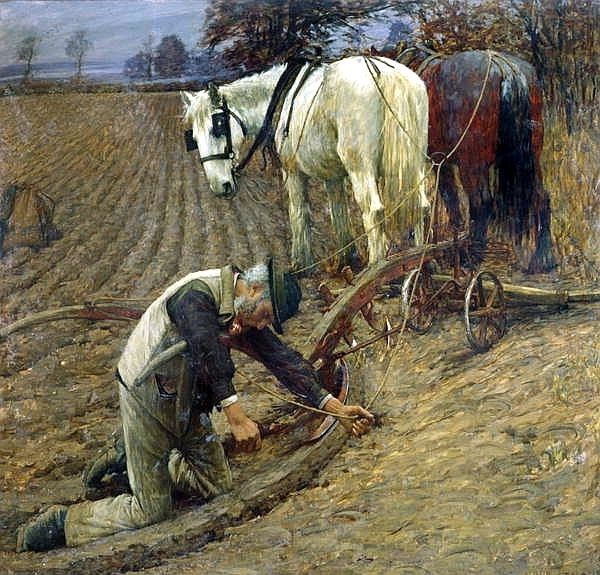
Ploughman with Woman Planting Potatoes 1884
0:00
0:00
vincentvangogh
Von der Heydt Museum, Wuppertal, Germany
plein-air, oil-paint, impasto
#
plein-air
#
oil-paint
#
landscape
#
figuration
#
oil painting
#
impasto
#
genre-painting
#
post-impressionism
#
realism
Dimensions: 70.5 x 170 cm
Copyright: Public domain
Curator: Vincent van Gogh painted "Ploughman with Woman Planting Potatoes" in 1884, an oil on canvas piece depicting rural life. Editor: It feels profoundly heavy, doesn't it? The figures are grounded, almost melded with the earth, reflecting an inescapable toil. Curator: Absolutely. This artwork reflects the social realism movement; labor, materiality, and the sheer effort are at the forefront. Consider the materiality – the thick, almost sculptural impasto reflects a conscious engagement with his chosen medium. Editor: And how the landscape dominates! There’s that stark horizontal division—earth below, sky above—underscoring their laborious task and isolating them within the immensity of nature. It whispers of endurance, but also of something bittersweet... a kind of stoic acceptance? Curator: Note how he captures the texture of the soil, the worn garments of the workers. The artist is not just painting a scene; he’s representing the agricultural economy itself, highlighting labor. The tools are also present: the plough, handled by the man following the ox; the scattering of seeds by the woman, bent in her sowing posture. Editor: There’s a rhythm in that stooped pose, I see her movements echoed, almost mimicking the land's swells and dips. Makes me ponder Van Gogh's own connection, doesn't it? Did he feel bound to his own 'earthly' work as a painter as they do to the soil? Curator: Undoubtedly. The Post-Impressionist influence emphasizes these observations of life: a commitment to reflecting lived reality that many artists abandoned at the time for abstraction. Think how many chose glamour, cityscapes and pleasure, and Van Gogh looked at workers and land, raw materials turned to sustenance by back-breaking work. Editor: Thinking about it all this work...it's really about hope and future isn't it? They believe the seeds they plant will provide something eventually. The simple hope is somehow very inspiring. Curator: A keen reminder to us all! What is seen is also an engagement in this long cyclical relationship between nature, labor and reward. Editor: Indeed. A poignant reflection on both the struggle and the quiet dignity embedded in rural existence.
Comments
No comments
Be the first to comment and join the conversation on the ultimate creative platform.
